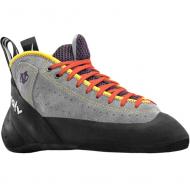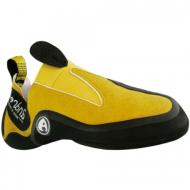Collecting every piece of gear takes a little time.
We think it's worth the wait.
Nice choice!
Give us a moment to collect those options for you.


Search by model name only, and spelling counts. Protip: Type slowly and wait for the auto-complete.
If you’ve already used other filters, this search bar will not override them.
Retired gear and unfilterable gear (missing key specs like price/weight) will not appear with this search.


It can be frustrating to find a piece of gear that you like, and then have no buying options. This filter aims to ease that problem. In the future we plan to add non-US retailers to this list and possibly call out each retailer directly.
We feel a little weird calling out Amazon separately as we're not huge fans of this mega-corp. We do this because we're partners with Amazon in multiple countries, so if somebody from the US, Canada, or UK clicks an Amazon link, it'll go to their country-specific Amazon page (when possible). At the moment, this is the only way to find non-US buying options on the site.


The full retail price in US dollars as stated by the brand/manufacturer/US distributer.
With non-US products, we have statically converted the price to US dollars.
This static conversion also means it's possible that there will be some misleading figures at times. The original price and currency will be noted on the individual product pages.


Specifically designed for the average man's foot. Typically wider and higher volume than women-specific models.
Specifically designed for the average woman's foot. Typically narrower and/or lower volume than men-specific models.
Manufacturer specifically states it's a kids shoe and it's available in tiny sizes!
If the manufacturer states it's unisex or does not list a gender, we consider it unisex. Unisex shoes are predominantly closer to a stereotypical men's shape and sizing. However some brands have unisex models that are wider than their typical women's model and narrower than their typical men's model.



The only type of shoe to have a lacing system. This allows for a more customized fit as you can tighten some areas and loosen others. Lace-ups are generally designed for more comfort (flatter lasted and more symmetric) because they're intended to be kept on longer than an easily removed slipper or velcro shoe.

There is no separate tongue and the top of the shoe is a stretchy material. Nice for bouldering because they're fast to put on and take off between burns. Some crack climbers also like them because it creates a smoother top surface with less bulk for jamming. Since the only adjustability is the stretchiness of the elastic material, it's extra important the shoe fits well from the start.


Also fast to take off and put on, but with some extra adjustability. The velcro straps secure the foot which helps to keep the heel in it's place. The most popular shoe type thanks to their versatility.

A recent hybrid: When the top of the shoe is stretchy like a slipper (no tongue) and also includes a velcro strap. This allows a more customized fit than a traditional slipper as the velcro helps secured the heel and arch. These are usually very downturned, performance oriented shoes.


Note: Lined leather shoes stretch less but are also less breathable compared to unlined leather.
Can be a nice compromise of performance and comfort: easier to size with minimal stretching but still conforms to the uniqueness of your foot. Of course this all depends on the placement and ratio of leather to synthetic materials.


The downturned nature of the last shape is best seen from a side profile.
The more downturn in a last the more power is driven to the toe and heel, assisting with standing on small edges and heel hooking.

Virtually no downturn; the shoe would rest flat on a table. These comfort shoes are designed for beginners and/or (all-day) trad climbers. Great for any climber who doesn't want to take their shoes off between each climb.

A mild downturn; there would be a small/medium gap when rested on a table. Arched shoes are often considered intermediate shoes as they balance comfort and performance.

An aggressive downturn; there would be a large gap if the shoe tried to rest on a table. Downturned shoes are most popular for climbing steep overhanging terrain and aggressive bouldering as the downturned nose allows the shoe to "hook" onto edges. This is the least comfortable style and these shoes are often removed when not being climbed in.


Shoe asymmetry reflects how much the toe of the shoe is in line with the heel. It is best seen from a bird's eye view of the shoe sole. The tradeoff is comfort vs performance.

Low asymmetry is usually less than a 20 degree difference. The toe and the heel are almost in-line with each other. This is the most comfortable position for the foot as the forward pressure is spread over a majority of the toe box. This natural foot position makes it ideal for all-day trad climbing.
New climbers most often choose this style as it will be the most comfortable. Although there aren't specific performance gains with this style, one could still climb 5.11+ in low asymmetric shoes.

Medium asymmetry usually has 20-30 degree difference as the toe is no longer in-line with the heel. The majority of climbers will enjoy this style as it balances comfort and performance. Most beneficial for 5.10+ climbers.

High asymmetry is when there is a 30+ degree difference from the toe and the heel. This directs all the power of the foot to the big toe for balancing on very small edges. Shoe manufacturers are working hard to make this configuration more comfortable. Most benefit gained from 5.11+ climbers.


Have you ever seen somebody else wearing a shoe and wanted to know what it was? Perhaps searching by color will help! And we like consistency on the site, so it seemed like we needed to add a color filter.
Note: If you choose a color and the picture does not seem to match, this means it's also available in another color and we just don't have capabilities to show you that color on this page. If you click into the product you'll be able to see more product photos (hopefully!) of the color you're looking for.


If you'd like to narrow down your search by what others consider to be, "The Best Gear" this is your filter. We’re including all the media awards from the magazines like Climbing, Rock and Ice, and Alpinist, along with online resources like Gear Junkie, Outdoor Gear Labs, and more.
We scour the internet for new awards quarterly. If you know of some reputable awards that we’re missing, send us a note so we can check them out.


The list of manufacturers and brands that we have all the technical specs for.
If a brand is missing from this list, scroll to the bottom of this page to see all the unfilterable gear we track, and ideally it'll be there.
If you don't see the brand you're looking for in the unfilterable products area, definitely send us a note so we can look into it further.
We do our very best to find and display every technical spec for every piece of climbing gear in the world. But sometimes we just can’t dig up a spec or two (usually it's the official price and weight). Sadly, this means not every product is available for filtering and sorting :(
If we allowed products that are missing key specs to display in the results above, these incomplete products would need to appear no matter what filters you chose. This would make the filtered results cluttered and misleading. So instead of leaving out these incomplete products entirely, we're listing them below: